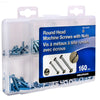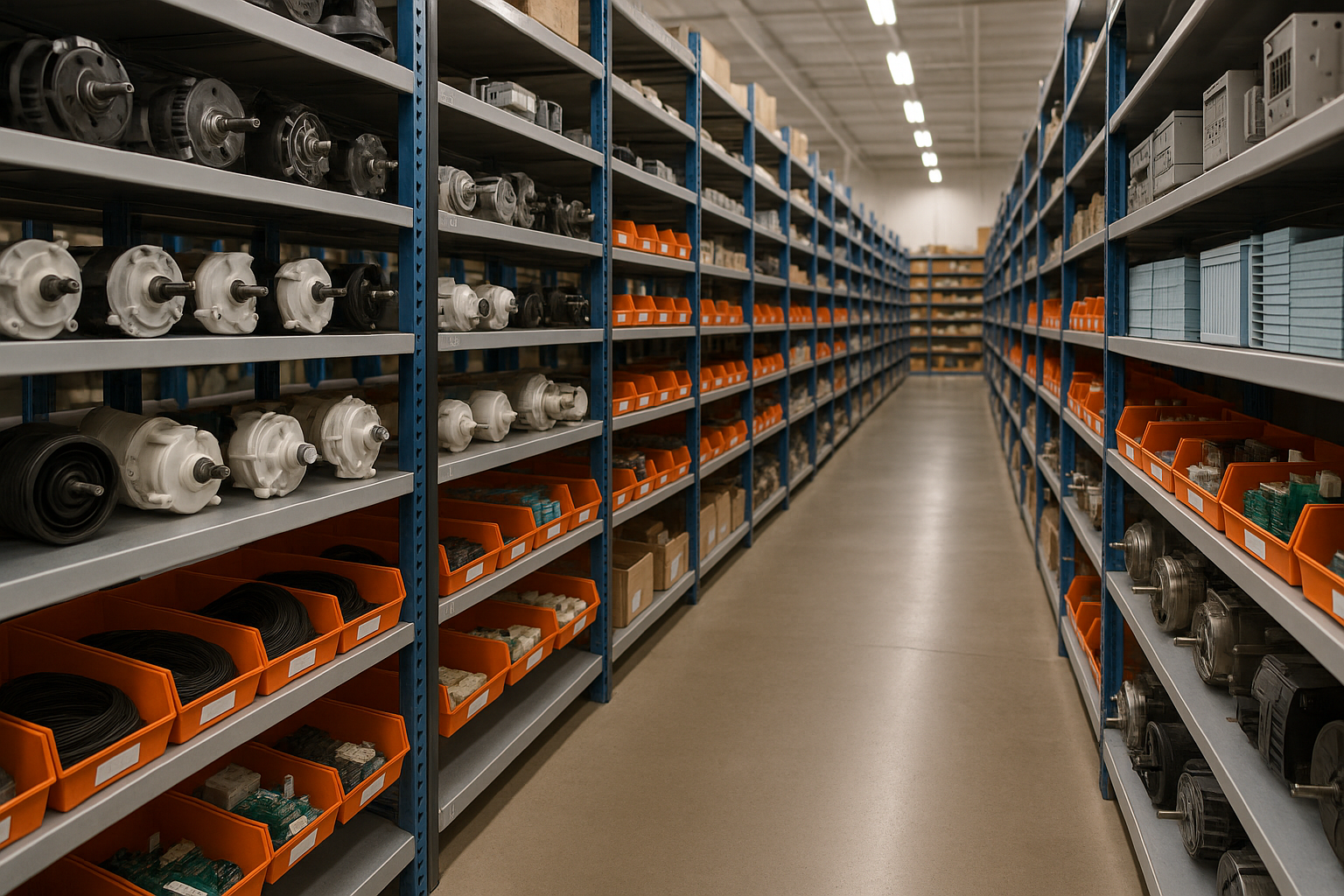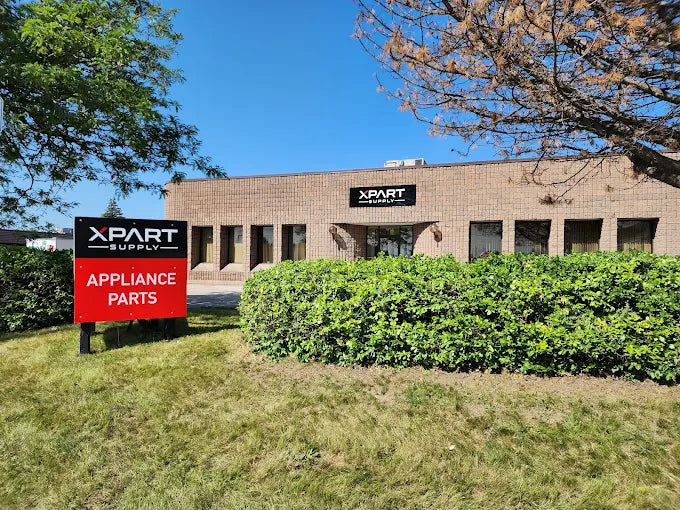Always inspect the surface element for damage before installing the new receptacle. A damaged or shorted surface element can cause the new receptacle to fail prematurely. Inspect the element for visible breaks, blisters, or gaps in the coil. Test the element with a multimeter for continuity (should read 30-50 ohms for most elements). Replace the element if it's damaged or shows signs of wear.
Document all wire connections before disconnecting. Take clear photos of the wire connections, wire colors, and wire routing before removing the old receptacle. This documentation is critical for proper reassembly and prevents wiring errors that can damage the new receptacle, element, or control board.
Use high-temperature wire nuts and heat shrink tubing. The 12001676 kit includes high-temperature wire nuts and heat shrink tubings designed to withstand the heat from the surface element. Always use these components—standard wire nuts and electrical tape can melt or fail at high temperatures.
This receptacle is designed for coil-style surface elements only. The 12001676 is compatible with coil-style (spiral) surface elements on Whirlpool and affiliated brand ranges. It is not compatible with smooth-top, induction, or gas ranges. Verify your range type (electric coil) matches before ordering.
Surface element receptacle replacement is a moderate repair. This repair requires electrical knowledge, moderate mechanical skill, and specialized tools (screwdrivers, wire strippers, heat gun, multimeter). Installation typically takes 30-45 minutes for professionals or 45-75 minutes for DIY repairs.
Monitor the first few heating cycles after installation. After installing the new receptacle, run several heating cycles and monitor for proper element heating, no sparking or arcing, no burning smells, and proper temperature control. Address any issues immediately before they affect cooking performance or safety.
Verify the wire connections are tight and secure. Loose wire connections can cause arcing, sparking, burning, or receptacle failure. After installation, verify each wire nut is tight by tugging gently on the wires. None should pull loose.
The receptacle operates at 240 volts and high current. The 12001676 receptacle operates at 240 volts and carries electrical current up to 20 amps. This is extremely dangerous—always turn off power at the circuit breaker before working on the range. Never touch the receptacle or wires while power is on.
Check the infinite switch for proper operation. If the element doesn't heat after receptacle replacement, the infinite switch (which controls power to the element) may be faulty. Test the switch by listening for a clicking sound when the element control is turned on. If you don't hear a click, the switch may need replacement.
Verify the terminal block ceramic is intact. The ceramic terminal block must be intact with no cracks, chips, or breaks. Damaged ceramic can cause electrical arcing or receptacle failure. Inspect the ceramic carefully before installation.
This repair restores full surface element functionality. A properly functioning receptacle provides secure electrical connection to the surface element. Replacing a faulty receptacle restores normal heating performance and prevents cold spots or uneven heating.
Never attempt to repair a burned or melted receptacle. Attempting to repair a burned or melted receptacle by cleaning, sanding, or applying epoxy can cause electrical shock, fire, or complete failure. Always replace a damaged receptacle with a new one.
The receptacle should not spark or arc during operation. When the element is turned on, the receptacle should not spark, arc, or emit smoke. Any of these symptoms indicates a problem—turn off the element immediately and verify connections.
This repair is cost-effective compared to range replacement. The cost of receptacle replacement ($80-150) is far less than the cost of a new range ($1,200-3,000+). Replace the receptacle promptly when failure is detected to prevent the need for expensive range replacement.
Verify the pigtail terminals are fully inserted into the receptacle. The surface element's pigtail terminals must be fully inserted into the receptacle terminal slots to ensure proper electrical contact. Partially inserted terminals can cause arcing, sparking, or poor heating.
The new receptacle may feel slightly different than the old one. New receptacles may have slightly different terminal tension or fit compared to the old receptacle. This is normal—the terminals should hold the element securely without excessive force.
Monitor for burning smells after installation. After installing the new receptacle, monitor for burning smells during the first few heating cycles. A slight smell from manufacturing oils burning off is normal and should dissipate within 5-10 minutes. Persistent burning smells indicate a problem.
This repair maintains cooktop safety and performance. A properly functioning receptacle is essential for safe, reliable cooktop operation. Damaged or burned receptacles can cause electrical shock, fire, or complete element failure. Replace damaged receptacles promptly.
The wire leads must be properly insulated. The receptacle wire leads carry 240 volts and high current. All connections must be properly insulated using high-temperature wire nuts and heat shrink tubing to prevent electrical shock or fire.
Verify the mounting bracket is secure. The receptacle mounting bracket must be securely mounted to the cooktop frame. Loose mounting can cause the receptacle to shift, damaging the ceramic or causing terminal misalignment.
Check the range wiring harness for damage. Before installing the new receptacle, inspect the range wiring harness for melting, corrosion, or damage. Damaged wires can cause the new receptacle to fail prematurely or create electrical hazards.
This receptacle is compatible with most Whirlpool-brand ranges. The 12001676 is designed for most Whirlpool, Maytag, KitchenAid, and affiliated brand electric ranges with coil surface elements. Verify your range model number matches one of the compatible models before ordering.
The terminal block must be oriented correctly. The receptacle terminal slots must face toward the front of the range to properly accept the surface element pigtail terminals. Verify correct orientation before tightening the mounting screws.
Never use standard electrical wire nuts. Standard electrical wire nuts are not rated for high temperatures and can melt or fail when exposed to heat from the surface element. Always use the high-temperature wire nuts included in the kit.
This repair extends range life and maintains resale value. Replacing a faulty receptacle promptly maintains the cooktop's functionality and safety, extending range life and preserving resale value.
Verify the element fits securely in the new receptacle. After installation, verify the surface element fits securely in the new receptacle without excessive looseness or tightness. The element should insert smoothly and be held securely by the terminal block.
The receptacle ceramic block is heat-resistant but fragile. The ceramic terminal block is designed to withstand high temperatures but is fragile and can crack if dropped or mishandled. Handle with care during installation.
Monitor the receptacle temperature during operation. The receptacle will become warm during element operation but should not become excessively hot or smoke. If the receptacle becomes too hot or smokes, turn off the element immediately and verify connections.
This repair prevents electrical shock and fire hazards. A properly functioning receptacle ensures safe electrical connection to the surface element. Replacing a faulty receptacle prevents electrical shock, fire, or complete element failure.
Check for proper element seating after installation. After installing the element on the new receptacle, verify the element sits level on the drip pan and is properly seated in the receptacle. Improper seating can cause poor heating or terminal damage.
The receptacle wire leads should not contact hot surfaces. Route the receptacle wire leads away from the surface element and other hot surfaces to prevent melting or insulation damage. Use the mounting bracket and heat shrink tubing to protect the wires.
Verify the infinite switch is sending power to the receptacle. If the element doesn't heat after receptacle replacement, use a multimeter to verify the infinite switch is sending 240 volts to the receptacle when the element control is turned on. If no voltage is present, the switch may be faulty.
This repair improves cooktop reliability and baking results. A properly functioning receptacle ensures consistent element heating and reliable cooking performance. Replacing a faulty receptacle restores confidence in cooktop operation and cooking results.
Never operate the range with a loose receptacle. A loose receptacle can cause terminal misalignment, arcing, sparking, or complete element failure. Ensure the receptacle is securely mounted before operating the range.
The receptacle should be replaced as a complete kit. The 12001676 includes all necessary components (ceramic block, bracket, wires, wire nuts, heat shrink tubing). Never attempt to use individual components from different kits, which can cause incompatibility or safety issues.
Monitor the element for proper heating after installation. After installing the new receptacle, verify the surface element heats evenly across the entire coil. Uneven heating or cold spots indicate a problem—verify terminal connections and element condition.
This repair restores full cooktop functionality. A properly functioning receptacle is essential for reliable surface element operation. Replacing a faulty receptacle restores full cooktop functionality and cooking capability.











































